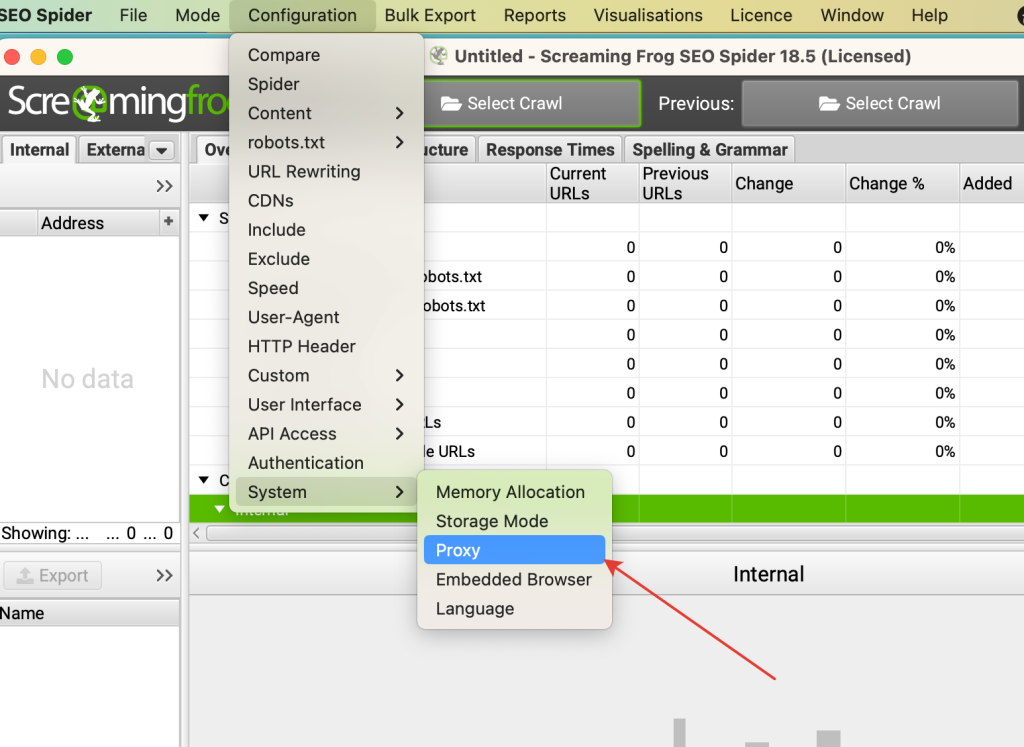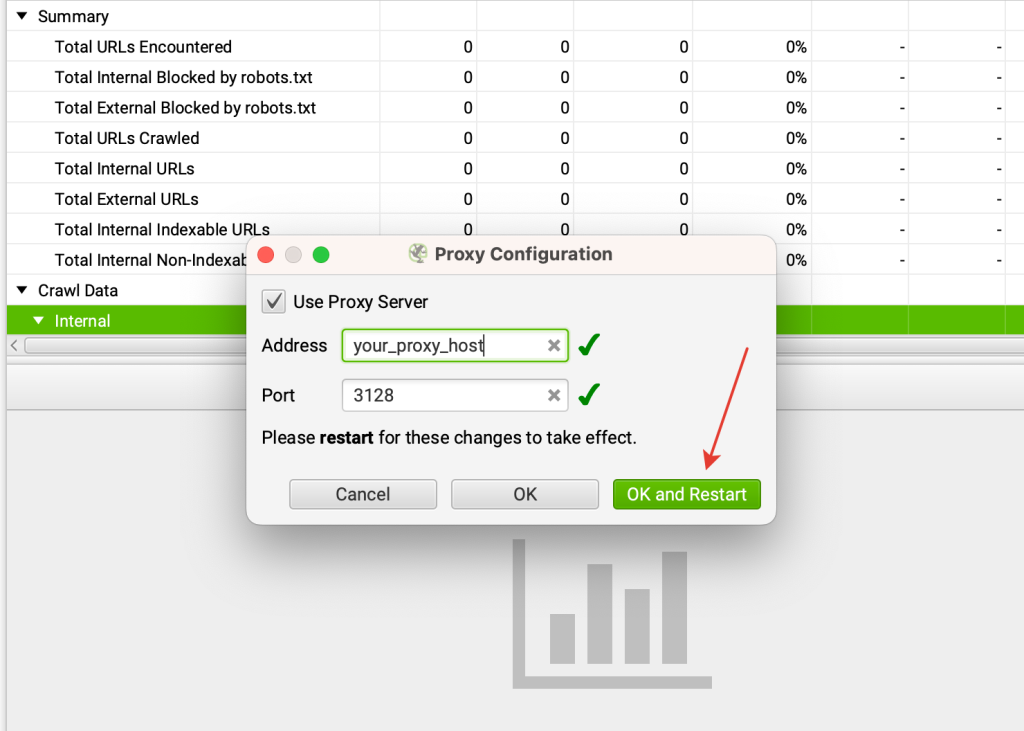- ProxyLib /
- Proxy Insights Hub /
- Proxies for SEO
Proxies for SEO: How to Use Them for SERP Monitoring, Data Parsing, and Competitor Analysis
Proxy servers are a crucial tool in the arsenal of SEO professionals, enabling them to tackle a wide range of tasks—from data collection and search engine results page (SERP) monitoring to competitor analysis and multilingual website testing. Proxies help bypass restrictions, speed up processes, and enhance the efficiency of SEO strategies while maintaining anonymity and flexibility. In this guide, we’ll dive deep into how to use proxies effectively, which types to choose, and how to configure them in popular tools.
Free proxies are suitable for small tests or learning, but their instability makes them risky for large-scale projects. Paid proxies, such as Bright Data or Oxylabs, offer speed and security, which pays off when parsing large datasets or working on critical tasks.
What Are Proxies and Why Are They Important for SEO?
Proxy servers act as intermediaries between your device and internet resources, masking your real IP address and providing an alternative one. This allows you to work anonymously, bypass geo-restrictions, and avoid blocks from search engines or websites. In the context of SEO, proxies solve the following tasks:- Data parsing from search engines, including rankings, snippets, and keywords.
- Website ranking monitoring across different regions and search engines.
- Competitor analysis—from website structure to their SEO strategies.
- Testing multilingual websites for content display accuracy and SEO errors.
- Speeding up processes by optimizing requests and distributing load.
Key Tasks Proxies Solve in SEO
1. Bypassing Restrictions and Blocks
Search engines like Google or Yandex, as well as competitor websites, may block IP addresses due to suspicious activity—such as multiple requests from a single address in a short time. Proxies distribute these requests across different IPs, minimizing the risk of being blocked and ensuring uninterrupted work.2. Speeding Up Data Parsing
Proxies optimize data collection through several factors:- Geographic proximity: Proxies located closer to the target server reduce latency.
- Caching: Some proxies store frequently requested data, speeding up subsequent requests.
- Parallel requests: Using multiple proxies allows for parallel processing.
3. Geotargeting and Multilingual Analysis
For local SEO, it’s crucial to see search results as users from different regions would. Proxies with IPs from specific countries or cities allow you to analyze local SERPs, check the accuracy of multilingual content display, and test regional website features.4. Anonymity in Competitor Analysis
Gathering competitor data is a delicate process. Proxies mask your IP, allowing you to study websites, their structure, content, and backlink profiles without revealing your activity. This is especially useful when working with automation tools or conducting long-term competitor monitoring.Types of Proxies and Their Applications in SEO
| Proxy Type | Description | Best Use Cases |
|---|---|---|
| Residential Proxies | IP addresses provided by real internet service providers, making them highly undetectable. | SERP monitoring, competitor analysis, working with sensitive data. |
| Datacenter Proxies | IPs from data centers—a cheaper and faster option but easier to detect. | General parsing, automating non-critical tasks. |
| Rotating Proxies | Proxies that automatically change IPs at set intervals or after a certain number of requests. | Intensive parsing, real-time SERP monitoring. |
| Mobile Proxies | IPs from mobile carriers, difficult to detect and block. | Testing mobile SERPs, working with social media platforms. |
Details on Mobile Proxies
Mobile proxies, which use IPs from mobile carriers, are increasingly popular in SEO due to their resistance to blocks and ability to mimic real user behavior. Their applications go beyond basic mobile SERP testing:- Testing mobile experience: Use mobile proxies to check page load speed, design responsiveness, and content display accuracy on devices in different regions.
- Working with social media: Mobile proxies are ideal for automating tasks on Instagram, Twitter, or TikTok, such as audience data collection or trend analysis, which is crucial for SEO strategies tied to content marketing.
- Bypassing advanced protections: Thanks to their high anonymity, mobile proxies help bypass advanced bot protection systems like Cloudflare or Distil Networks.
How to Choose the Right Proxies for SEO Tasks?
Choosing proxies depends on your goals, budget, and technical requirements. Here are the key criteria:- Proxy type: Residential for high anonymity, datacenter for cost-efficiency, rotating for intensive tasks.
- Speed and stability: High bandwidth and minimal downtime are crucial for real-time parsing.
- Geographic coverage: Ensure the provider offers IPs from the regions you need.
- IP rotation: Automatic IP changes reduce the risk of blocks.
- Support: Providers with active technical support can help resolve setup issues.
Free vs. Paid Proxies Comparison
Choosing between free and paid proxies can significantly impact the success of your SEO tasks. Here’s how they differ:| Feature | Free Proxies | Paid Proxies |
|---|---|---|
| Speed | Low, often overloaded | High, optimized by the provider |
| Reliability | Frequent downtime and disconnections | Stable performance, uptime guarantees |
| Anonymity | Low, easily detectable | High, especially with residential proxies |
| IP Availability | Limited regional options | Wide range of countries and cities |
| Cost | Free | $1 to $500+ per month |
Recommended Proxy Providers
Below are popular providers trusted by SEO professionals:| Provider | Proxy Types | Features | Pricing |
|---|---|---|---|
| Bright Data | Residential, datacenter, mobile | 195 countries, high reliability, flexible configurations | Premium pricing, trial available |
| Oxylabs | Residential, datacenter | 188 locations, high speed, API integration | Competitive, business-oriented |
| NetNut | Residential, static IPs | Global coverage, stable connections | High cost, suitable for large projects |
| Infatica | Residential, datacenter | Affordable pricing, SEO-friendly | Budget-friendly, trial available |
How to Use Proxies for SERP Parsing?
Parsing search engine results pages (SERPs) is the foundation for competitor analysis, ranking monitoring, and developing promotion strategies. Proxies make this process fast, secure, and scalable, preventing blocks and ensuring access to regional data.Technical Tips for Proxy Configuration
Configuring proxies may seem complex, but with the right approach, it becomes accessible even for beginners. Here are some practical tips:-
- OS-level configuration: In Windows, go to Settings → Network & Internet → Proxy and enter the proxy IP and port. In Linux, use the command
export http_proxy="http://IP:port"in the terminal. - Command-line usage: For Python scripts, add proxies to the code:
import requests proxies = { "http": "http://username:password@IP:port", "https": "http://username:password@IP:port" } response = requests.get("https://example.com", proxies=proxies) print(response.text)
- OS-level configuration: In Windows, go to Settings → Network & Internet → Proxy and enter the proxy IP and port. In Linux, use the command
- Proxy rotation: Use tools like ProxyRotator or manually configure rotation through an IP list to automatically change addresses after a set number of requests.
Using Proxies in Screaming Frog SEO Spider
Screaming Frog SEO Spider is a popular website crawling tool that allows bypassing IP blocks and collecting data through proxies.- Launch Screaming Frog and go to Configuration → System → Proxy.

- In the Proxy Configuration section, add proxy in the format
IP:port(e.g.,123.45.67.89:8080) orusername:password@IP:portfor authenticated proxies.

- Press ok and restart.
- Enter the website URL and click Start. Results will be displayed in the All Results table.
Using Proxies in Ahrefs
Ahrefs is a powerful tool for backlink analysis, keyword research, and site audits. Proxy configuration in Ahrefs is limited but available for Site Audit and API. Here’s the updated guide:- Site Audit Setup:
- Go to the Site Audit section and create or open a project.
- Open Settings → Crawl Settings.
- In the Proxy section, click Add Proxy.
- Enter proxy details in the format
http://username:password@IP:port(orhttps://if required). - For bulk upload, use Upload List and add a .txt file with a list of proxies.
- Save settings and start the audit.
- API Setup:If you’re using Ahrefs API, configure proxies in your code. Example in Python:
import requests proxies = { "http": "http://username:password@proxy_IP:port", "https": "http://username:password@proxy_IP:port" } response = requests.get( url="https://api.ahrefs.com/v2/some-endpoint", params={ "target": "example.com", "token": "YOUR_API_KEY" }, proxies=proxies ) print(response.json()) - For Other Tools:Ahrefs doesn’t support proxies directly in Keyword Explorer or Site Explorer. Workaround:
- Configure a system-wide proxy in your browser (e.g., Chrome: Settings → Network → Proxy).
- Or use a VPN before accessing Ahrefs.
Additional SEO Tools with Proxy Integration
Beyond the mentioned tools, other popular solutions integrate well with proxies to expand SEO capabilities:- Moz: Ideal for analyzing local markets and checking rankings across regions. Proxies enable local SERP data collection and strategy evaluation for specific geographic zones.
- Majestic: Specializes in backlink profile analysis. Proxies allow anonymous competitor backlink research, especially when handling large datasets without risking blocks.
- Serpstat: A multifunctional platform for ranking monitoring, keyword analysis, and site audits. Proxies help bypass restrictions during mass SERP parsing and ensure accurate data for different countries.
How to Test Multilingual Websites for SEO Errors Using Proxies?
Multilingual websites often adapt content for different regions, requiring checks for display accuracy based on geolocation. Proxies allow you to simulate access from various countries and identify errors.Legal and Ethical Considerations of Using Proxies
Using proxies in SEO requires not only technical knowledge but also an understanding of legal and ethical boundaries. Here’s what to consider:- Compliance with data laws: In some regions (e.g., the EU with GDPR), collecting user or competitor data without consent may violate data protection laws. Ensure your actions comply with local regulations
Verified proxy expert
-

Bulatov Roman
Roman Bulatov brings 15+ years of hands-on experience:
- Web Infrastructure Expert: Built and scaled numerous data-heavy projects since 2005
- Proxy Specialist: Designed and deployed a distributed proxy verification system with a daily throughput capacity of 120,000+ proxies across multiple performance and security metrics.
- Security Focus: Creator of ProxyLib's verification methodology
- Open Internet Advocate: Helps journalists and researchers bypass censorship
"I created ProxyLib after years of frustration with unreliable proxies - now we do the hard work so you get working solutions."